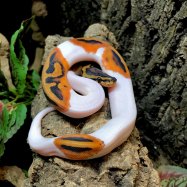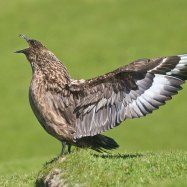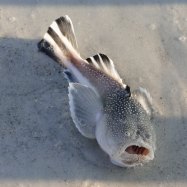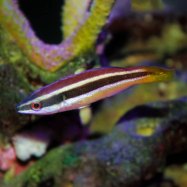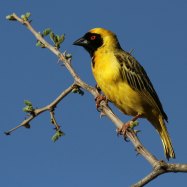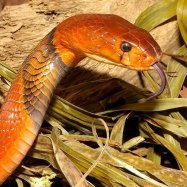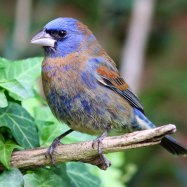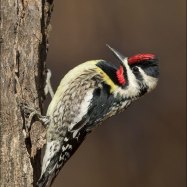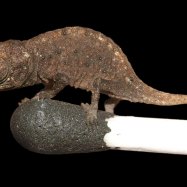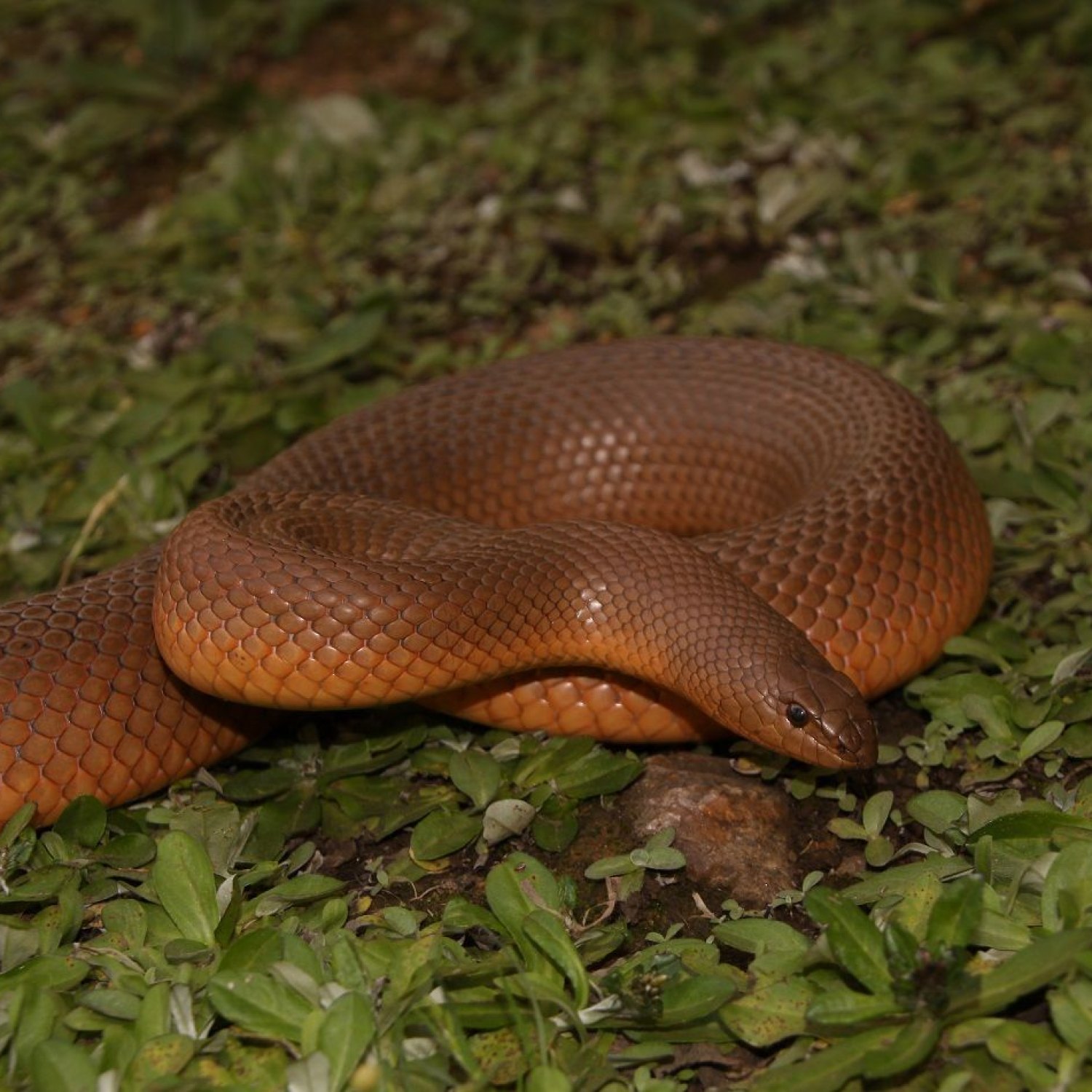
Mole Snake
1.2 to 1.5 meters (4 to 5 feet)
The African Mole Snake is a fascinating member of the Colubridae family, found across various regions of Africa. With a length of 1.2 to 1.5 meters (4 to 5 feet), these snakes have a long and cylindrical body shape. Despite their misleading name, they are not related to moles and are actually skilled climbers, making them a top predator in their habitat. #AfricanMoleSnake #Colubridae #Africa
Animal Details Summary:
Common Name: Mole Snake
Kingdom: Animalia
Habitat: Savannas, grasslands, forests, and semi-desert areas
The Fascinating Mole Snake: A Native of Sub-Saharan Africa
Some say that snakes are the most feared creatures on earth. Their ability to slither silently, their ominous appearance, and their venomous bite make them a subject of terror in many cultures. However, not all snakes are dangerous and harmful. Some, like the mole snake, are actually beneficial to humans and the ecosystem they live in Mole Snake.The scientific name of the mole snake is Pseudaspis cana, but it is commonly known as the mole snake. This species is a member of the Animalia kingdom, the Phylum Chordata, and the Class Reptilia. It belongs to the Order Squamata and the Family Colubridae. These snakes are found in multiple countries in Africa and can thrive in various regions, making them a fascinating study for animal enthusiasts.
Habitat and Feeding Habits
Mole snakes are found in savannas, grasslands, forests, and semi-desert areas throughout Sub-Saharan Africa. They are excellent burrowers and spend most of their time underground in search of food. Their diet primarily comprises small rodents, birds, lizards, and frogs, making them valuable for agricultural purposes as they help control the rodent population.As carnivores, mole snakes hunt actively, burrowing through the soil to catch their prey. They are skilled at hunting in the dark, using their sense of smell and tongue-flicking to detect their prey Monkey. Once they locate their prey, they strike quickly, wrapping their long, cylindrical body around the animal to subdue it. Due to their slow metabolism, mole snakes can go days without eating and usually consume one large meal every few weeks.
Geographical Distribution and Coloration
The mole snake is indigenous to Sub-Saharan Africa, ranging from South Africa to Sudan and Cameroon. They are also found in Namibia, Botswana, Zimbabwe, Mozambique, and Angola. Their geographical distribution is vast, with these snakes adapting to different habitats and climates throughout the continent.Mole snakes are known for their beautiful and unique coloration, which varies slightly according to their habitat. In savannas and grasslands, they typically have a light yellow-gray color with dark brown or black stripes, providing camouflage in the dry, open spaces. In forests, their color becomes darker, resembling shades of brown or black, blending in with the foliage. In semi-desert areas, they have a sandy-brown color, allowing them to conceal themselves against the dry, sandy soil.
Body Shape and Length
The most distinctive feature of the mole snake is its long, cylindrical body. Their body shape is useful for burrowing and allows them to move swiftly through the soil. They have a relatively small head compared to their body, and their prominent eyes are well adapted for their underground lifestyle.On average, mole snakes measure between 1.2 to 1.5 meters (4 to 5 feet) in length, with females usually being slightly longer and heavier than males. They have a slender body, with a muscular build, and can weigh up to 2.5 kilograms. However, some individuals can grow up to two meters (6.5 feet) in length, making them one of the largest snake species in Africa.
The Myth of Harmful Mole Snakes
Mole snakes often fall victim to the belief that all snakes are dangerous and should be avoided at all costs. This misconception stems from their appearance, which resembles that of venomous species such as cobras or mambas. However, this couldn't be further from the truth. Mole snakes are non-venomous and pose no threat to humans. Even when threatened, they choose to flee, rather than attack.Due to their similarity to venomous snakes, mole snakes are often killed by humans out of fear. This misconception not only harms the snake population but also deprives humans of the benefits they provide. As burrowers, mole snakes play an essential role in maintaining the balance of the ecosystem, and their natural predators, like birds of prey, rely on them for food.
The Human-Mole Snake Connection
Although mole snakes are usually shy creatures, they can occasionally be found in human settlements, especially in rural areas. Villagers often keep mole snakes as pets and consider them good luck charms. In some cultures, their appearance is believed to bring wealth and prosperity to the household.Furthermore, mole snakes are also beneficial to farmers as they help control the rodent population, protecting crops from damage. In some areas, farmers even welcome mole snakes on their land and consider them an important part of their agriculture.
Conservation Efforts
Mole snakes are not considered a threatened species as their population is stable throughout their range. However, despite their benefits to humans and the environment, these snakes still face threats due to human activities. Habitat destruction and fragmentation are a significant concern for this species, as they require large areas of land for their burrowing habits. Road mortality, snake collections for the pet trade and traditional medicine also contribute to the decline in their numbers.Fortunately, many conservation efforts are in place to protect these amazing creatures. Awareness campaigns have been launched to educate people about the importance of mole snakes in maintaining the ecosystem's balance. Furthermore, strict laws have been implemented to regulate the collection and trade of these snakes. Many organizations are also working towards preserving their natural habitats and protecting them from human encroachment.
The Natural Beauty of the Mole Snake
In conclusion, the mole snake is a fascinating species native to Sub-Saharan Africa with unique features and a crucial role to play in the ecosystem. Despite their misleading reputation, these snakes are harmless and contribute to the balance of nature in many ways. Their natural beauty and intricate adaptation to their environment make them a valuable addition to the rich biodiversity of Africa. By raising awareness about their significance and supporting conservation efforts, we can ensure the survival of these magnificent creatures for generations to come.

Mole Snake
Animal Details Mole Snake - Scientific Name: Pseudaspis cana
- Category: Animals M
- Scientific Name: Pseudaspis cana
- Common Name: Mole Snake
- Kingdom: Animalia
- Phylum: Chordata
- Class: Reptilia
- Order: Squamata
- Family: Colubridae
- Habitat: Savannas, grasslands, forests, and semi-desert areas
- Feeding Method: Carnivore
- Geographical Distribution: Sub-Saharan Africa
- Country of Origin: Multiple countries in Africa
- Location: Various regions in Africa
- Animal Coloration: Usually gray, brown, or black with lighter underparts
- Body Shape: Long and cylindrical
- Length: 1.2 to 1.5 meters (4 to 5 feet)
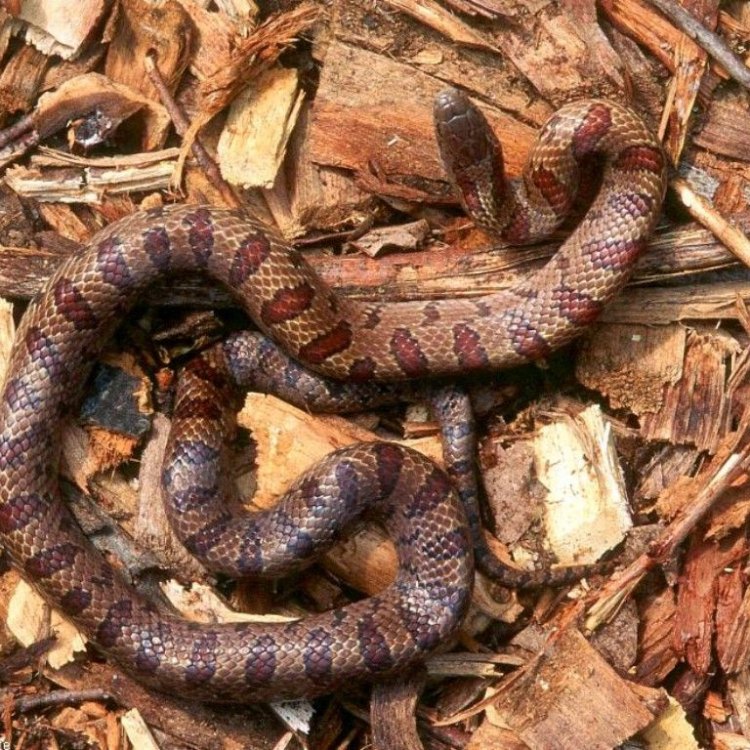
Mole Snake
- Adult Size: Medium
- Average Lifespan: Up to 20 years
- Reproduction: Egg-laying
- Reproductive Behavior: Males fight for females during mating season
- Sound or Call: Hisses and rattles tail
- Migration Pattern: Non-migratory
- Social Groups: Solitary
- Behavior: Mostly active at night
- Threats: Habitat loss and fragmentation, persecution by humans
- Conservation Status: Least Concern
- Impact on Ecosystem: Controls rodent populations
- Human Use: Not commonly used by humans
- Distinctive Features: Blunt head, large eyes, and pointed snout
- Interesting Facts: Mole snakes are excellent climbers and can climb trees and shrubs to search for prey.
- Predator: Large birds, mammals, and other snakes
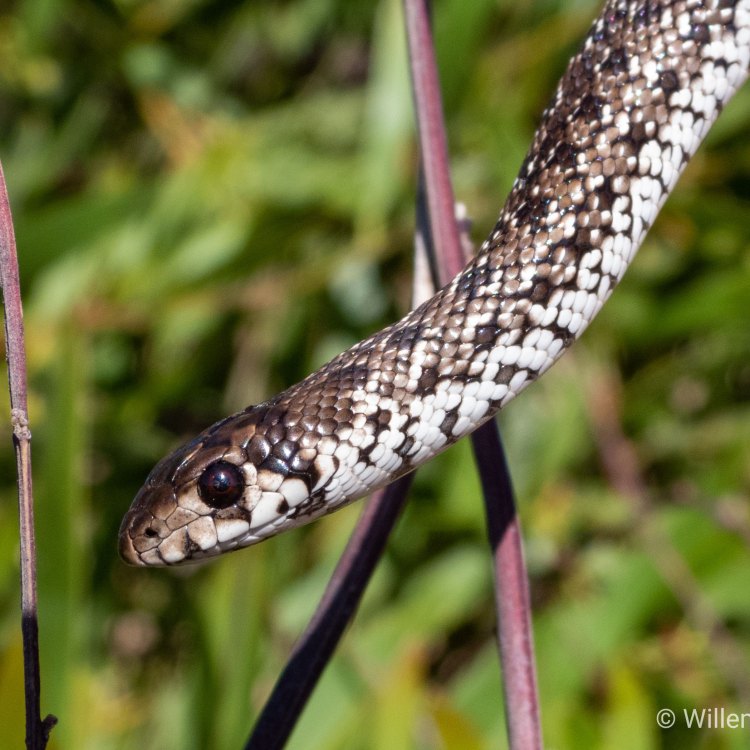
Pseudaspis cana
The Fascinating World of Mole Snakes: A Look into their Behavior, Habitat, and Impact on Ecosystems
Nestled in the savannas and grasslands of Southern Africa, lives a reptile that is often overlooked and misunderstood. The mole snake, also known as the Cape sand snake, is a unique and fascinating species that has adapted to its environment in remarkable ways.With an average adult size of 4-5 feet and an average lifespan of up to 20 years, mole snakes are considered medium-sized snakes. However, what sets them apart from other snakes is their distinctive features PeaceOfAnimals.Com. They have a blunt head, large eyes, and a pointed snout, giving them a unique appearance compared to other snakes in their habitat.
Reproduction for mole snakes is an egg-laying process, and males actively seek out females during the mating season. Males engage in combat to win over females, showcasing their strength and agility. However, once the mating season is over, mole snakes are solitary creatures, preferring to live and hunt on their own.
These snakes are mostly nocturnal, preferring to be active at night when the temperatures are cooler. They are primarily ground-dwellers but are also excellent climbers. One of the most interesting facts about mole snakes is that they can climb trees and shrubs to search for their prey.
Mole snakes are opportunistic hunters, and their diet consists of small mammals and reptiles, including rodents, lizards, and even other snakes. They use their excellent sense of smell and powerful constriction to capture and kill their prey Megalodon. This behavior makes them essential for controlling rodent populations in their ecosystem.
While mole snakes may seem like intimidating creatures, they are not commonly used by humans. However, they do have an impact on human lives. For example, farmers often welcome these snakes into their fields to control rodent infestations, saving them from crop damage and loss.
But like many other species, mole snakes face threats to their survival. Habitat loss and fragmentation due to human activities, such as agriculture and urban development, are causing a decline in their population. Additionally, humans often perceive snakes as a threat and may kill them out of fear, further endangering their numbers.
Despite these threats, mole snakes are currently classified as "Least Concern" on the IUCN Red List, which means their population is stable. However, it is essential to continue monitoring and conserving their habitat to ensure their survival in the future.
Apart from their impact on human lives, mole snakes play a crucial role in their ecosystem. Besides controlling rodent populations, they also act as prey for a variety of predators. Large birds, mammals, and other snakes regularly hunt and feed on mole snakes, showcasing their role in the food chain.
One of the most significant challenges in studying mole snakes is their elusive nature and solitary lifestyle. However, through advancements in technology, scientists have been able to observe and learn more about these secretive creatures.
For instance, scientists use radio telemetry to track the movements and behavior of mole snakes in the wild. This technology involves attaching small transmitters to snakes and tracking their movements using specialized equipment.
Through the use of this technology, scientists have made some interesting discoveries about mole snakes. One study found that these snakes are non-migratory and tend to stay within a relatively small range for their entire lives. This behavior makes them highly dependent on their habitat for survival, making threats like habitat loss even more concerning.
Another study explored the social behavior of mole snakes and found that they are not entirely solitary. They often interact and share burrows with other mole snakes, although they are not actively social with each other.
One of the most intriguing aspects of mole snake behavior is their unique sound or call. While most snakes are known for their hissing, mole snakes have a distinctive rattling tail that they use to communicate. This behavior is often a warning sign to potential predators, as well as a way to communicate with other snakes.
In addition to their behavior, mole snakes also have an interesting role in traditional beliefs and cultural practices. In some African cultures, these snakes are seen as sacred animals and are worshipped and revered.
For example, the Xhosa people of South Africa believe that mole snakes possess powerful spiritual abilities and are a symbol of protection and healing. They also believe that these snakes have the power to bring prosperity and fertility to their communities.
Mole snakes also feature in traditional medicines and are used to treat a variety of ailments, including snake bites, headaches, and skin conditions. While these practices may seem unusual, they showcase the cultural significance of these snakes in the lives of local communities.
In conclusion, mole snakes are a unique and fascinating species, with behaviors, adaptations, and cultural significance that make them an integral part of their ecosystem. While they may not be commonly used by humans, mole snakes play a vital role in controlling rodent populations, making them essential for maintaining the balance of their environment.
However, like many other species, they face threats to their survival, such as habitat loss and human persecution. It is crucial for us to understand and appreciate these creatures to ensure their conservation and to maintain the delicate balance of our natural world. So the next time you come across a mole snake, remember that it is not just an ordinary snake, but a fascinating and essential part of the intricate web of life on our planet.

The Fascinating Mole Snake: A Native of Sub-Saharan Africa
Disclaimer: The content provided is for informational purposes only. We cannot guarantee the accuracy of the information on this page 100%. All information provided here may change without prior notice.

